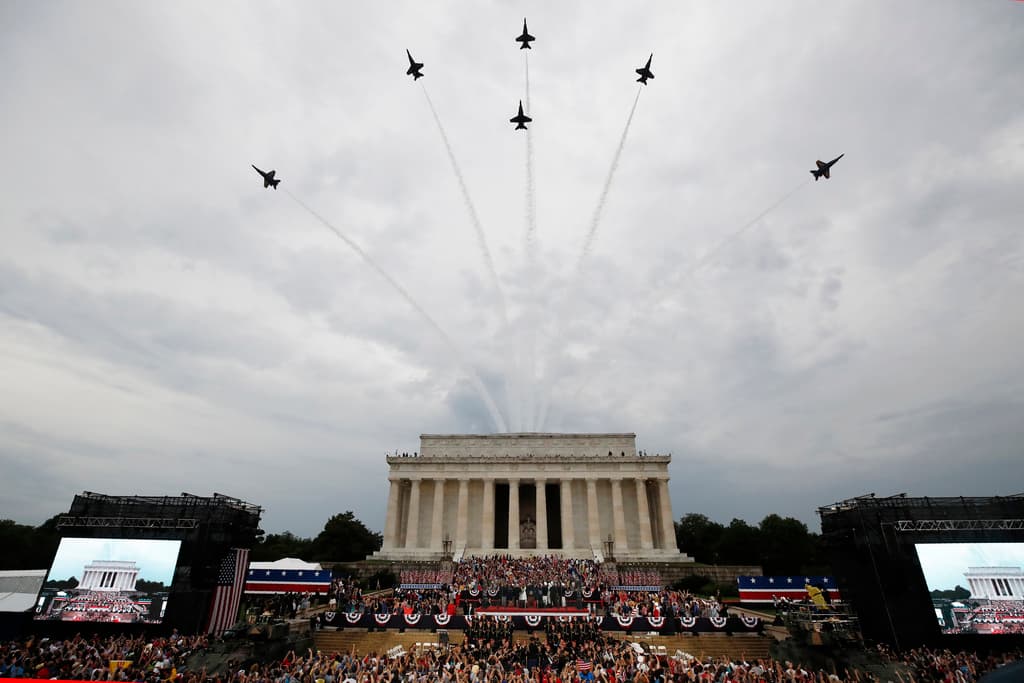July 2nd: The Day President Adams Celebrated Independence
The road to nationhood, as befit a federal republic of equal states, wasn’t without disagreements.

On July 4th, Americans celebrate the 1776 Declaration of Independence by the 13 original states. President John Adams, however, pegged the anniversary for July 2, one miss in a letter that’s otherwise eerie for its accuracy and the way it links our generation to the one that fought the Revolutionary War.
“The second day of July 1776,” Adams wrote to his wife, Abigail, on July 3, 1776, “will be the most memorable epocha in the history of America,” marking the Continental Congress voting through a resolution by the Virginia delegate, Richard “Light Horse Harry” Lee.
Lee’s resolution stated that “these United Colonies are, and of right ought to be, free and independent states, that they are absolved from all allegiance to the British crown, and that all political connection between them and the State of Great Britain is, and ought to be, totally dissolved.”
The road to nationhood, as befit a federal republic of equal states, wasn’t without disagreements. South Carolina and Pennsylvania opposed ditching the crown until the vote, and New York abstained, an ambivalence reflected in New York City’s conflicting loyalties during the British occupation.
Adams couldn’t have foreseen all the challenges seven years of war with the world’s largest and mightiest empire would bring, but his letter rings with optimism as he and his fellow Davids began their fight against the Goliath, demonstrating his confidence in the ultimate triumph of liberty.
“I am apt to believe,” Adams wrote of the vote, that July 2nd “will be celebrated, by succeeding generations, as the great anniversary festival. It ought to be commemorated as the Day of Deliverance by Solemn Acts of Devotion to God Almighty.”
The name was a little more clunky than Independence Day, but no one ever accused Adams, known as “the Voice of the Revolution,” of economizing words, which is to the great benefit of our national record since so many founders burned their papers or wrote little of their hopes for the future.
It’s easy to understand why that first generation saw the hand of God — what they often called “providence” — guiding the new nation, never more so than when Adams and his fellow founder, President Jefferson, both passed away on July 4, 1826, the fifth anniversary.
July 2nd may be Independence Day on the Adams calendar, but had three Founding Fathers not died two days after the holiday — President Monroe went to his reward on July 4, 1831 — nobody would have been looking skyward, thanking the Higher Power or just pondering the Creator’s guidance.
Adams had the holiday’s name trimmed to Independence Day, just as the commander-in-chief is referred to only as “president,” sparing us from the deep breath required before using the title he suggested: “His Highness, the President of the United States of America, and Protector of the Rights of the Same.”
Short of all the selfies, Adams predictions of how we’d celebrate independence hit their mark. “It ought to be solemnized,” he wrote, “with pomp and parade, with shews,” an archaic spelling of shows, “games, sports, guns, bells,” all features of our celebrations as are fireworks, which he covered in “bonfires and illuminations.”
These would be held, Adams predicted in what would later be called Manifest Destiny, “from one end of this continent to the other,” at a time the 13 states clung to the East Coast of North America with ill-defined borders beyond the Allegheny Mountains, where the empires of France and Spain — as well as Great Britain and native tribes — held dominion.
The Louisiana Purchase was 30 years away in 1776, and it wasn’t until the acquisition of California from Mexico in 1848 along with the addition of the Oregon Territory from Britain — plus Russian Alaska in 1867 — that Adams’ vision of a celebration from “sea to shining sea” at last became reality.
July 4, 1776, is emblazoned atop the Declaration of Independence approved by Congress. Adams may have been off on the date of our federal holiday, but his hopes for America’s celebrations are otherwise spot on, and we may yet hope, as he concluded his letter, that the pomp and parades endure “from this time forward forever more.”

